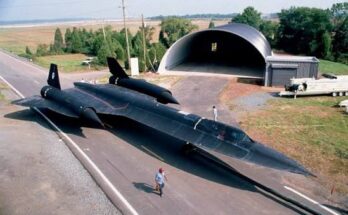
Japan Airlines 787-9 and Delta Air Lines 737-800 Collide While Taxiing at Seattle-Tacoma International Airport, No Injuries Reported
Japan Airlines 787-9 and Delta Air Lines 737-800 Collide While Taxiing at Seattle-Tacoma International Airport
A Japan Airlines Boeing 787-9 and a Delta Air Lines Boeing 737-800 were involved in a collision while taxiing at Seattle-Tacoma International Airport, causing damage to both aircraft and leading to an immediate investigation by aviation authorities. Fortunately, no passengers or crew members on either flight were injured in the incident.
The collision, which occurred on the airport’s taxiway, resulted in visible damage to the aircraft, prompting ground crews to halt operations and assess the situation. While minor incidents on the ground are not uncommon, a collision between two large commercial jets raises concerns about air traffic control procedures, taxiway congestion, and communication protocols at busy airports like Seattle-Tacoma.
The Incident: What Happened?
According to initial reports, the Japan Airlines Boeing 787-9 was taxiing for departure when it made contact with a Delta Air Lines Boeing 737-800 that was either taxiing to its gate or waiting for clearance. The exact circumstances of the collision, including whether one of the aircraft was stationary at the time of impact, remain under investigation.
Passengers aboard both flights reported feeling a jolt but were unaware of the extent of the damage until announcements were made by the respective flight crews. Airport officials quickly dispatched emergency response teams to the scene to assess the situation and ensure passenger safety.

Extent of the Damage
While no official damage report has been released, images taken by airport personnel and passengers show that at least one of the aircraft sustained damage to its wingtip. It is not yet clear whether the damage is superficial or if repairs will require prolonged aircraft downtime.
Collisions like this often result in scrapes, dents, or damage to winglets, but in more serious cases, structural repairs may be necessary before the aircraft can return to service. Both Japan Airlines and Delta Air Lines have grounded the involved aircraft until inspections and repairs are completed.
Potential Causes of the Collision
Aviation experts suggest that several factors could have contributed to the incident, including:
1. Taxiway Congestion: Seattle-Tacoma International Airport is one of the busiest airports in the U.S., with numerous aircraft taxiing simultaneously. Limited space and high traffic volume increase the risk of ground collisions.
2. Miscommunication Between Pilots and Ground Control: If there was confusion over taxi instructions or unclear directions from air traffic control, it could have led to the two aircraft being in close proximity.
3. Poor Visibility or Weather Conditions: If the incident occurred in low visibility conditions (such as fog, heavy rain, or darkness), pilots may have had difficulty judging distances between aircraft.
4. Mechanical or Brake Issues: While less likely, a malfunction in braking systems on either aircraft could have prevented a timely stop, leading to the collision.
The Federal Aviation Administration (FAA) and the National Transportation Safety Board (NTSB) have been notified and will conduct a thorough investigation to determine the root cause.
Passenger and Airline Response
Following the collision, both flights were immediately delayed, and passengers were informed about the situation. Those on the Japan Airlines flight were eventually deboarded and provided with alternative travel arrangements, while Delta passengers whose flight was affected were given similar accommodations.
A statement from Japan Airlines expressed regret over the incident and assured passengers that safety remains the airline’s top priority. “We are cooperating fully with aviation authorities and will conduct an internal review to prevent similar occurrences in the future,” the statement read.
Delta Air Lines also released a brief statement confirming the incident and stating that passenger safety was never compromised. “We are working closely with airport officials to assess the situation and minimize disruptions for our customers,” a Delta spokesperson said.
Lessons for Aviation Safety
While mid-air collisions are extremely rare due to advanced radar systems and strict air traffic control protocols, ground collisions remain a concern at busy airports where multiple aircraft are maneuvering in close quarters.
To prevent similar incidents in the future, airlines and aviation authorities may consider:
• Enhanced Taxiway Surveillance: Using more advanced ground radar systems and cameras to provide air traffic controllers with better visibility of aircraft positions.
• Improved Communication Protocols: Ensuring pilots receive clear, unambiguous taxi instructions and confirming aircraft positions before allowing movement.
• Stronger Ground Safety Regulations: Reviewing and updating ground movement policies to minimize the risk of taxiway collisions.

• Crew Training and Awareness: Increasing training on situational awareness during taxiing, particularly at high-traffic airports.
Conclusion: A Close Call with No Casualties
The collision between the Japan Airlines Boeing 787-9 and Delta Air Lines Boeing 737-800 at Seattle-Tacoma International Airport serves as a reminder of the challenges associated with managing air traffic on the ground. While no injuries were reported, the incident has disrupted flight schedules and raised concerns about safety procedures at busy airports.
As investigations continue, aviation authorities will work to determine the cause and implement measures to prevent similar incidents in the future. Meanwhile, passengers affected by the incident are being accommodated, and the damaged aircraft will undergo repairs before returning to service.
Despite the disruption, the most important takeaway is that safety measures ensured there were no casualties, highlighting the effectiveness of aviation protocols even in unexpected situations.


